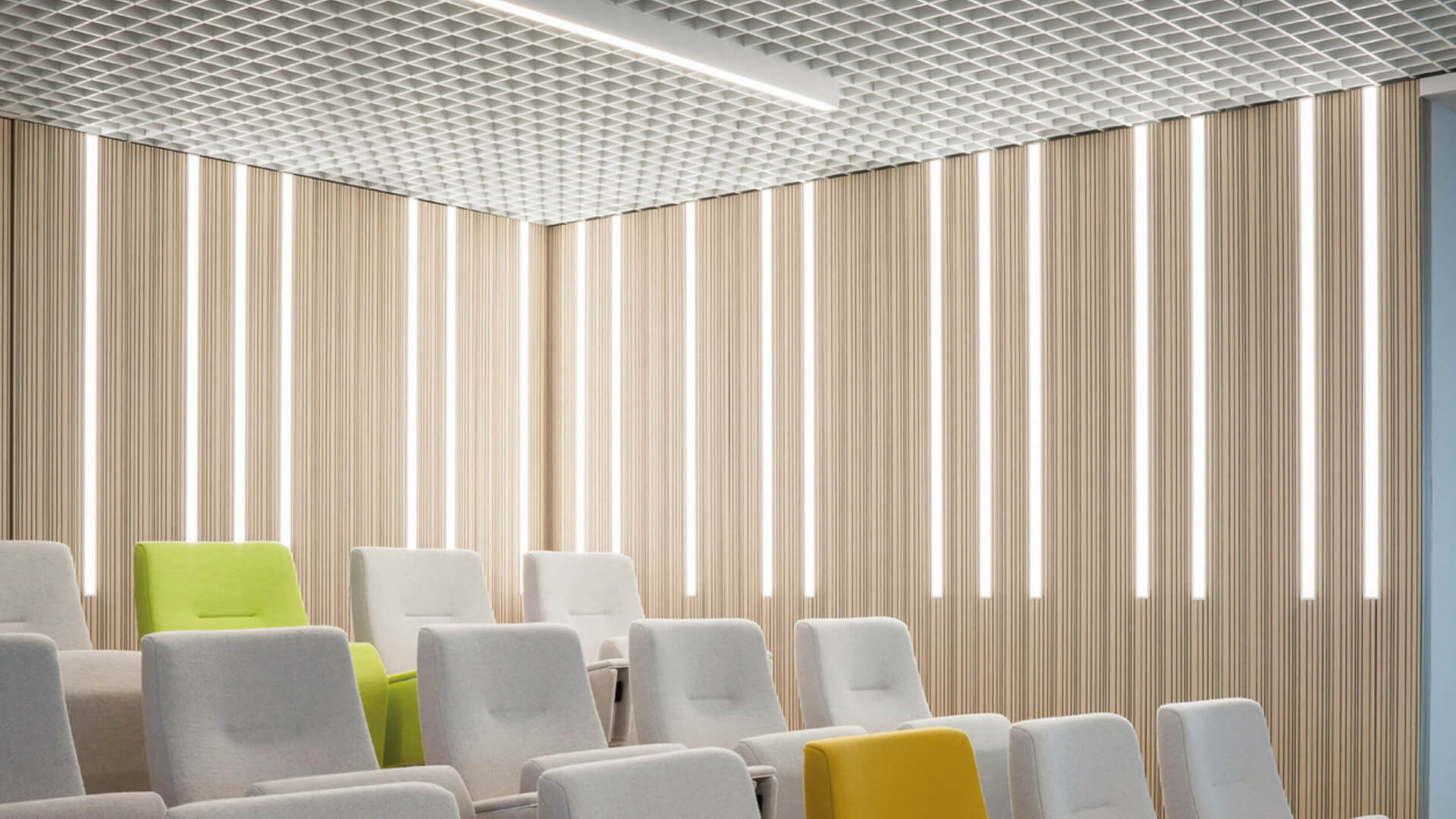
Perforated panels can play either a starring or supporting role in your next project.
Acoustic panels cost can vary wildly depending on a few factors but often design and not performance is what will drive cost. Perforated patterns allow sound to transmit through hard materials like wood, metal, plastics and more. Otherwise reflective materials can be “perf’d” into endless sizes shapes and patterns. We find that often this decorative element is misunderstood as the sound absorbing element itself. In fact, it’s not until the material is backed or combined with an absorptive element will it do anything other than allow sound (and light) to pass though.
Consider the richly patterned dimensionally carved Plyboo Sound. While the overall pattern is clearly linear, perforations create second and even tertiary patterns like chevron, diamonds, and movement as shown in the new Beeswing from the award winning LOUVER collection. Decospan on the other hand takes a more restrained approach with their new product Shinnoki Acoustics. Here .5mm Nano Perforations ( smaller than a micro) are barely visible particularly in darker colored veneers. These panels have an acoustical rating of NRC .45 as a stand alone product thanks to an unseen secondary perforation behind the face and a felt backer, but can be augmented with higher performance secondary backers. Lastly, Tailor Made installations by Wood-Skin is a composite of perforated MDF combined with a textile core. The faceted surfaces allow for diffusions or “scattering “ of sound which is ideal for theaters and more advanced applications. Perforated materials can augment, recede or define your interior space. Remember to keep assembly requirements in mind. Most perf’d panels will require thick backers to meet their highest published ratings or don’t supply backers at all. Lastly, consider fire performance and hanging details particularly in ceilings where deflection can sometimes occur if improperly engineered.
